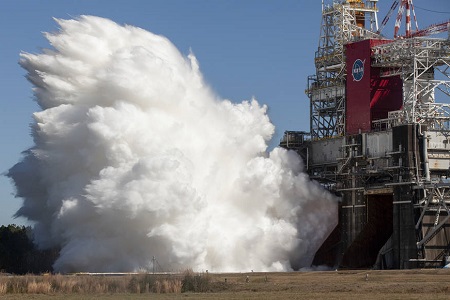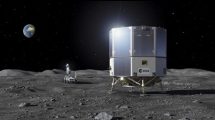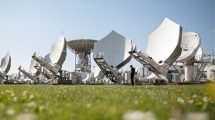
NASA has completed an eight-minute test of engines on a Boeing-built rocket for Artemis missions that aim to return US astronauts to the moon by 2024, more than half a century since the last lunar walk.
The successful test, known as a hot fire, is a critical milestone ahead of the agency’s Artemis I mission, which will send an uncrewed Orion spacecraft on a test flight around the Moon and back to Earth, paving the way for future Artemis missions with astronauts.
Engineers designed the eight-part Green Run test campaign to gradually bring the SLS core stage to life for the first time, culminating with the hot fire. The team will use data from the tests to validate the core stage design for flight.
Commenting on the launch, Acting NASA Administrator Steve Jurczyk said: “The SLS is the most powerful rocket NASA has ever built, and during today’s test the core stage of the rocket generated more than 1.6m pounds of thrust within seven seconds. The SLS is an incredible feat of engineering and the only rocket capable of powering America’s next-generation missions that will place the first woman and the next man on the Moon. Today’s successful hot fire test of the core stage for the SLS is an important milestone in NASA’s goal to return humans to the lunar surface – and beyond.”
NASA previously conducted a hot fire test of the SLS core stage on January 16. The four RS-25 engines fired together for the first time for about one minute before the test ended earlier than planned.
During the second hot fire test, the stage fired the engines for a little more than eight minutes, just like it will during every Artemis launch to the Moon. The longer duration hot fire tested a variety of operational conditions, including moving the four engines in specific patterns to direct thrust and powering the engines up to 109% power, throttling down and back up, as they will during flight.
John Honeycutt, manager for the SLS Programme at NASA’s Marshall Space Flight Center in Huntsville, Alabama, added: “This longer hot fire test provided the wealth of data we needed to ensure the SLS core stage can power every SLS rocket successfully. During this test, the team conducted new operations with the core stage for the first time, repeated some critical operations, and recorded test data that will help us verify the core stage is ready for the first and future SLS flights for NASA’s Artemis programme.”
Stennis Center Director Richard Gilbrech, commented: “Today is a great day for NASA, Stennis and this nation’s human space exploration programme. This final test in the Green Run series represents a major milestone for this nation’s return to the Moon and eventual mission to Mars. So many people across the agency and the nation contributed to this SLS core stage, but special recognition is due to the blended team of test operators, engineers, and support personnel for an exemplary effort in conducting the test today.”
Testing the SLS rocket’s core stage is a combined effort for NASA and its industry partners. Boeing is the prime contractor for the core stage and Aerojet Rocketdyne is the prime contractor for the RS-25 engines.
SLS, Orion, and the ground systems at Kennedy, along with the human landing system and the Gateway in orbit around the Moon, are NASA’s backbone for deep space exploration. SLS is the only rocket that can send Orion, astronauts, and supplies to the Moon on a single mission. The exploration of the Moon with NASA’s Artemis program includes preparations to send astronauts to Mars as part of America’s Moon to Mars exploration approach.












Add Comment